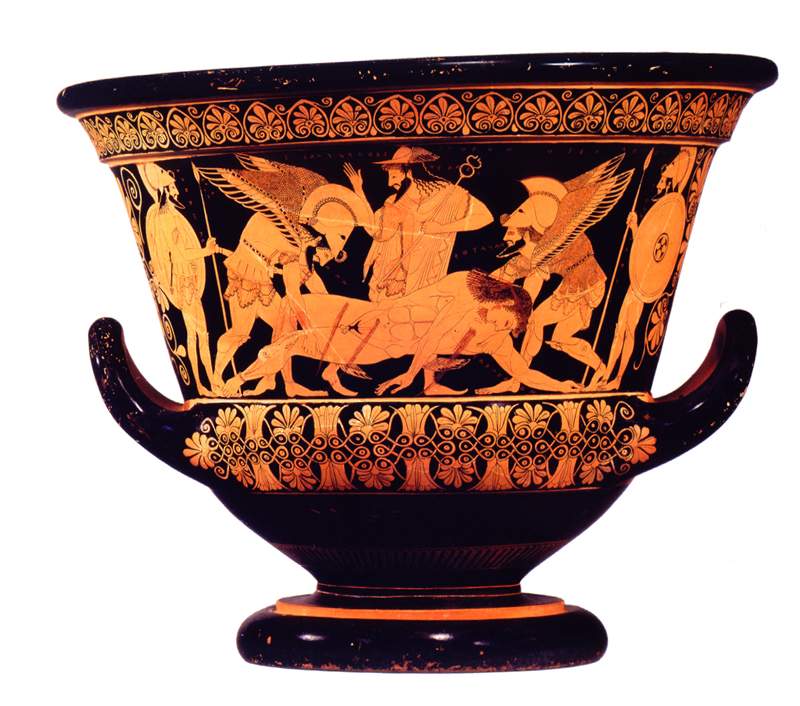Fifteen years ago, in July 2004, the Etruscan necropolis of Cerveteri and Tarquinia were inscribed on the UNESCO World Heritage List. To mark this important anniversary, from July 25 to October 31, 2019, the National Cerite Museum and the National Archaeological Museum in Tarquinia will host an exhibition dedicated to the Etruscans as master craftsmen. Entitled, precisely, Etruscan Master Craftsmen, the exhibition will focus on the ancient knowledge and production traditions of this ancient people.
The exhibition takes place in the two museums, and the narrative unfolds by following in the footsteps of some of the objects in the collections, appropriately placed within the permanent display. The exhibition, curated by Andrea Cardarelli and Alessandro Naso, will be enriched by important loans such as some ceramic masterpieces preserved in Rome, at the National Etruscan Museum of Villa Giulia and some famous precious objects from theRegolini Galassi Tomb, belonging to the Vatican Museums, which for the first time will return to Cerveteri, where they were discovered.
A series of particularly significant finds from the Cerveteri and Tarquinia necropolises are offered to the public, making them stand out from the museum itinerary. “In the name of the Etruscans this exhibition,” explains Edith Gabrielli, director of the Polo Museale del Lazio, “holds together four sites of great importance for the art and culture of our country. For us it is an important milestone: like the entire ArtCity Estate 2019 project, of which it is a part, it underscores the now achieved ability of the Polo Museale del Lazio to ’network’ with local administrations.”
For these reasons, and with the intention of embarking on a comprehensive scholarly journey in line with current research trends, it was decided to focus on the exceptional relevance of Etruscan craftsmanship and the extraordinary expertise achieved by artisans during the first millennium B.C. in the two cities of Cerveteri and Tarquinia.
The public will also find reproduced, as a sample-object, a bronze helmet of particular prestige and socio-economic significance from the early Iron Age (late 10th - 8th centuries B.C.), filming on video the stages of the production sequence to show them alongside the original objects and reproductions. In this way, it will be possible for everyone to see what technical knowledge and how much craftsmanship knowledge is concealed in objects, most of which are only given a hasty glance. Visitors will also be able to admire objects of rare value in a new light, such as the exceptional trousseau from the Tarquinian tomb with the famous situla (a special type of cylindrical vase) from the beginning of the 7th century B.C. bearing the name in hieroglyphic characters of Pharaoh Bocchoris, as well as a finely decorated bronze trumpet-lithium, shield and axe, buried in the 7th century B.C. as a ritual offering in an ancient votive deposit in Tarquinia.
From the end of the 6th to the beginning of the 5th century B.C. the import of painted pottery from various regions of Greece, with the absolute pre-eminence of Attica and Athens in particular, reached its apogee: the very vessels produced at the time constituted at a powerful and effective vehicle for spreading the culture and mythology of the Greeks to central Italy as well. This is testified by one of the most famous objects preserved in the Cerveteri Museum: the crater of Euphronios (or Euphronius), a well-known masterpiece of Attic production, requested by an Etruscan. The presence of works made directly by Greek artists then stimulated a rich local production in Etruria, evidenced, for example, by the group of Ceretan hydrias (vessels for holding drinks) with their original and immediately recognizable style.
The exhibition has a scientific committee of archaeologists, art historians and museologists, including some of the leading international experts in Etruscology. Among the scholars who are members are: Fernando Gilotta (University of Campania “Luigi Vanvitelli”), Barbara Jatta (Director of the Vatican Museums), Laura Michetti (Sapienza University of Rome), Marina Micozzi (University degli Studi della Tuscia), Marco Pacciarelli (University of Naples Federico II), Enrico Parlato (University of Tuscia), Maria Antonietta Rizzo (University of Macerata).
Hours, all locations (Cerite National Archaeological Museum in Cerveteri, Banditaccia Necropolis in Cerveteri, National Archaeological Museum in Tarquinia, Monterozzi Necropolis in Tarquinia): Tuesday through Sunday from 8:30 a.m. to 7:30 p.m. The ticket office closes one hour earlier. Tickets (one location only): full 6 euros, reduced 2 euros. Cumulative ticket Museum + Necropolis (Tarquinia or Cerveteri), full 10 euros, reduced 4 euros, valid for two days. Cumulative ticket all venues: full 15 euros, reduced 8 euros, valid for seven days.
The exhibition, promoted and organized by the Polo Museale del Lazio directed by Edith Gabrielli, is part of Artcity Estate 2019. The catalog is published by arte’m. For all info visit the Artcity website.
Image: the Crater of Euphronius (Cerveteri, Cerite National Archaeological Museum)
 |
| Etruscan artisans are featured in an exhibition in Tarquinia and Cerveteri |
Warning: the translation into English of the original Italian article was created using automatic tools. We undertake to review all articles, but we do not guarantee the total absence of inaccuracies in the translation due to the program. You can find the original by clicking on the ITA button. If you find any mistake,please contact us.